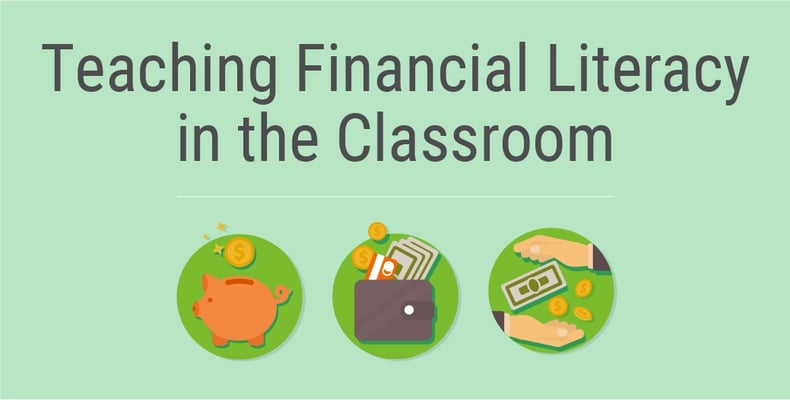
I often hear from parents, “Why didn’t they teach me the things I really needed to know in school, like how to do my taxes and responsibly handle money?” These parents obviously felt something was lacking in their education and don’t want their children have the same experience.
It's a good question, although I would point out that education should be relevant to the learner—and doing taxes isn’t relevant (yet!) to students in the 5th grade. I think that kind of reaction misses the point, though. Too often, our curriculum centers around abstract concepts or examples that aren’t very practical. Most of the time students don’t carry around eight apples, give their friend three apples, then have to figure out how many are left. I’ve never had to figure out when trains will arrive that travel at different speeds, but I do have to balance my checkbook daily. So the question is certainly one we should consider.
Rethinking Mathematical Concepts
Maybe we could think about it the other way around. By applying the concepts we want students to learn in math to financial situations, we can hope that they will learn how money works, how debt works, and possibly the consequences and rewards of different financial decisions. At the same time, we will hit the standards we need to teach at our grade level.
Many states have added financial literacy to their standards in social studies over the past few years. The crossover between social studies and math isn’t one we often recognize, but it would be worth having conversations about if this alignment isn’t already present.
Tying Financial Literacy Into Your Curriculum
If you are new to the idea of financial literacy, here is a great starting point. There are actually national standards for educators to teach financial literacy in the classroom from kindergarten to high school. Of course, depending on the level that you teach, your lessons could look very different. Here are some resources for all different grade levels and age ranges that could be used to teach the standards in your classroom:
Finance in the Classroom: This comes from the great state of Utah, but has lessons that hit the national standards very well. By clicking on the grade level breakdown, the lessons and resources can be found for any particular grade from K-12. The section for 11th and 12th grade is a very comprehensive resource for a high school teacher looking to get started.
Hands on Banking: This site offers free lessons and resources for teaching students about how money works using real-life scenarios. This is a perfect answer to the parent comment above about, “Never learning this in school.” The real-world examples should be relevant to the targeted age ranges.
Consumer Jungle: This site is full of game-based learning opportunities for all different types of situations. There is actually research on how gamification of financial situations helps students to make better financial decisions in the real world. There are simulations on buying your first car, balancing a checkbook, and planning for retirement. Some of the games are “flashier” than others, but they do have games for all age ranges from elementary students to high school. They are engaging and “video game-like,” so they are a fun way for students to learn.
Dave Ramsey Financial Peace: For years, Dave Ramsey has shared information about financial literacy on his radio program. He also has products aimed at families and students of different ages. There are high school level resources that your school could purchase and look into as part of a business or personal finance class. You could even consider purchasing some of the board games for indoor recess times to help reinforce concepts for the elementary level.
High School Financial Planning Program: Powered by NEFE, this free program is completely clear of any bias by corporate sponsors and comprehensive for high school students. If you are a high school business teacher looking for a curriculum, this would be the place to start. There are also adult components to the program that can be used. It is very through and teacher friendly.
MimioConnect: The Boxlight online lesson resource has activities and lessons ready to be used—or you can modify the lessons as you see fit. Here are several dealing with finance, covering such topics as personal finance choices to useful lessons on credit and debt.
There are many more resources available, and there is a good chance that your state has some that are specific to your standards and needs. Hopefully, our students will be able to glean some knowledge about how money works while they are young so they can apply that knowledge when they are older. The end goal is financially astute and successful adults in the future—we can all agree on that!
Looking for more resources to help tackle this area? Search a wide range of topics and lessons relating to math, finance, and banking on MimioConnect, our online educator community. Join today!>>


